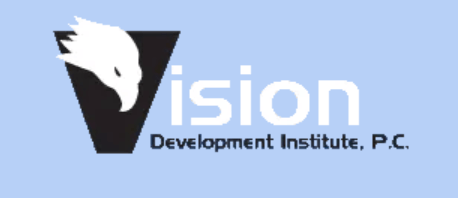 Effective Treatment of Convergence Insufficiency
Effective Treatment of Convergence Insufficiency
Standard eyeglasses, contact lenses, medications or surgery can not fix Convergence Insufficiency. In-office Optometric Vision Therapy is proven to be the most effective treatment for Convergence Insufficiency by a national multi-site peer-reviewed study which was conducted by the National Institutes of Health/National Eye Institute in the United States.
Our eye doctors are experts in the testing, diagnosis and, as needed, the treatment of Convergence Insufficiency with Vision Therapy.
What is Convergence Insufficiency (CI)?
Convergence insufficiency (CI) is a treatable near vision disorder and eye muscle coordination problem that can not be repaired with eye surgery, medications, standard eyeglasses, or contact lenses. Results from recent scientific studies show that at least 1 out of every 20 people (5%) have Convergence Insufficiency. Most of these studies have been conducted with school age children or full grown adults and show that the incidence/frequency of Convergence Insufficiency is similar across all populations, racial groups, and cultures.
Insufficient Convergence of the Eyes
When doing reading or other close work, a person’s two eyes must work as a coordinated team in order to turn in and focus (converge) so as to make the words or visual target clear and single (no blurry or double vision, no jumpy vision, such as words moving on the page while reading, etc.). For people with normal healthy convergence of the eyes and binocular vision — in other words, people who don't have Convergence Insufficiency — convergence of the two eyes (binocular vision) happens easily, effortlessly, and automatically...without any conscious effort or thought.
In contrast, people with the medical visual condition of Convergence Insufficiency (CI) do not have normal, stable convergence of the two eyes. That is, the two eyes do not dependably work together to turn in (converge) with consistency, ease, accuracy, etc. As a result, any person with this condition must constantly expend extra effort to force the eyes to turn in to focus on a chosen visual target or to focus and follow changing and/or moving visual targets. Compared to a person with normal convergence of the eyes, the person with Convergence Insufficiency works much harder to clearly see, process, and comprehend all that they are seeing.
Symptoms of Convergence Insufficiency
The additional effort that the person with Convergence Insufficiency must expend to coordinate and process visual information from the two eyes frequently can cause a number of troubling symptoms such as eyestrain, headaches, blurred vision, double vision, difficulty concentrating, loss of place and concentration while reading or doing close work, slow and fitful reading and writing, sleepiness during reading, motion sickness, bumping into things, clumsiness with hand-eye coordination activities or sports, heightened anxiety or excessive muscle tension in peripheral muscles, digestion problems, etc.
In other words, in many cases, Convergence Insufficiency creates an excessive and continuous energetic drain on an affected person’s equilibrium or homeostasis, cognition and many other functions of the central and autonomous nervous systems, such as concentration, comprehension, executive function, visual-motor-cognition functions and/or digestion. And it is noteworthy that, in some cases, Convergence Insufficiency can even negatively impact autonomic nervous system functions, such as digestion or the immune system.
Convergence Insufficiency - Testing, Diagnosis, and Treatment
Adequate testing and diagnosis for Convergence Insufficiency is not widely available. Due to the general lack of testing for this diagnosis, a person with convergence insufficiency usually suffers alone and they and their family are unaware that the afflicted person is expending lots of extra physical and mental effort simply in order to see and function.
It is important to understand that testing for Convergence Insufficiency is typically not included in a standard vision exam with the 20/20 eye chart. This omission leads to under-diagnosis and under-treatment, because almost all people who will ultimately test as having Convergence Insufficiency will initially test as having 20/20 eyesight on a standard eye chart exam. Consequently, many people suffer for years and into adulthood without receiving the proper testing, diagnosis and treatment.
Our practice is committed to providing the best testing, diagnosis, and treatment of this visual condition.
Convergence Insufficiency and the Standard 20/20 Eye Test
It is important to understand that a finding of 20/20 vision does not mean perfect or even good enough vision. The 20-20 passing grade simply means that a person can see clearly with at least one eye at the distance of 20 feet only. To repeat for emphasis, only clear vision in at least one eye at a distance of 20 feet is measured in the standard 20/20 eye chart test.
For healthy normal vision, we need to have two eyes working together as a smooth, easy, simultaneous, and coordinated team. This is called eye teaming and the more technical or medical term is BINOCULAR VISION. Convergence Insufficiency is a binocular vision impairment that can affect learning, reading, sports ability, and many areas of life.
Undiagnosed Convergence Insufficiency - Often Blamed on Behavioral Issues or Character Traits
The perception of most people who have Convergence Insufficiency and those who are close to them is that perceived behavioral and/or emotional problems are not understood to have a physical cause (a treatable vision problem!). Instead, the perceived behavioral and/or emotional problems of the person with undiagnosed Convergence Insufficiency are often blamed on character traits or other neurobiological or behavioral diagnoses, such as ADD, ADHD, dyslexia or even mislabelled as "on the spectrum." Convergence Insufficiency is often mistaken by individuals, teachers, friends, and family as "laziness," "spaciness," "day dreaming," "clumsiness," "indecisiveness," "disorganized," "poor time management," "high maintenance," "high anxiety," or, as mentioned before, ADD-ADHD, dyslexic or mildly autistic.
In summary, Convergence Insufficiency usually goes undetected, undiagnosed, and untreated until or unless the person receives a comprehensive vision examination with a vision specialist, such as a behavioral/developmental or pediatric optometrist.

 Effective Treatment of Convergence Insufficiency
Effective Treatment of Convergence Insufficiency